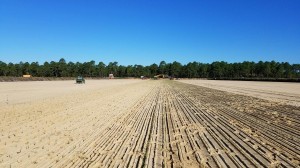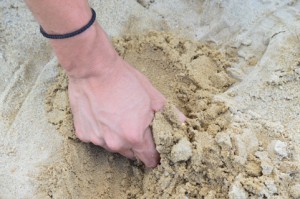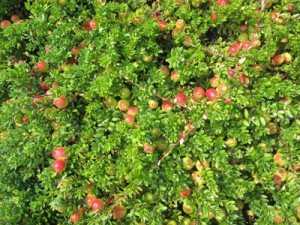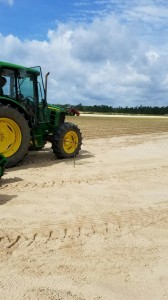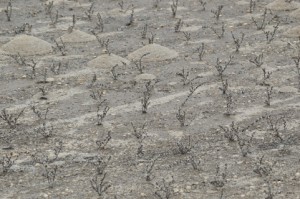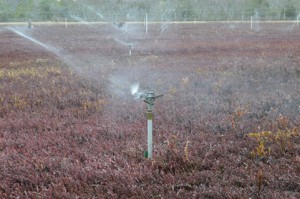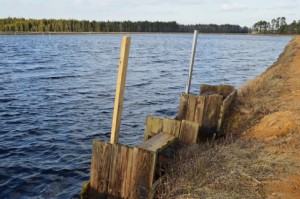Our team has finished planting the latest set of renovated bogs, and things are looking good!
Since 2014 we’ve been planting in late summer in order to take advantage of the weather, the longer daylight hours, and the increased team availability. There are two methods of planting: conventional propagation, which means pressing mowed vines or prunings directly into the bogs to be established; and rooted cuttings, which means planting plants with roots already established. Pine Island has used both methods in the past, but mainly we’ve moved on to using rooted cuttings. Another concern with planting is implementing an irrigation program, both with ground water and sprinklers, that provides moisture for vine growth without causing excessive soil saturation, which can lead to favorable conditions for phytopthora, which in turn can lead to fruit or root rot. Pine Island uses both ditches and sprinklers for irrigation. During the early spring, after the winter flood is removed, irrigation is usually covered by our frost protection program. However, concerns for adequate soil moisture should not be forgotten during frost season. Several warm, sunny days without rain or frost irrigation can result in the need for irrigation. Checking the soil yourself is extremely important; tensiometers are good, but it’s important to learn the hands-on method, as well.
“We planted 79 acres this year,” says supervisor Matt Stiles. “We averaged a little over 5 acres a day with two machines and a crew of 24.” This year’s variety is Mullica Queen, chosen because of its timing. “We went with that one due to the geography of this year’s reno. By the time they’re ready to go we can pick one area all at the same time.”
This was Matt’s first year running the planting operation, and he did well. “It was definitely a challenge,” he says. “Coordinating everything, getting the right plants at the right time with the right people. Constantly adjusting the planters, how to identify a problem and how to fix it. And you have to be very careful working around the irrigation system; it’s tough for the driver on the tractor to actually see the sprinklers. But everyone did really well.”
“We planted more acres per days than we ever have,” says manager Mike Haines. “We now have two twelve-row planters now, after replacing the eight-row we sent to Chile. Last year we averaged 4.25 acres a day, and this year we got a little over 5 per day. Which is a lot more, especially with the heat this year. It was a big obstacle for Matt to overcome, but he did a great job.”
And as a bonus, Matt also took some video! If you think the GoPro gave us some great point-of-view shots, wait till you see this!
*Photos/video courtesy of Matt Stiles.

